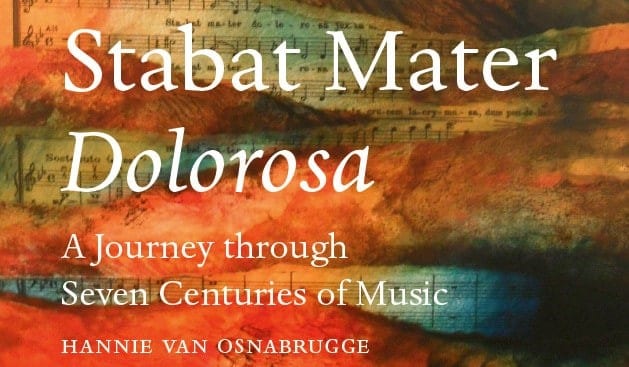Stabat Mater Dolorosa: the poem and the poet
The Stabat Mater Dolorosa is thought to originate from Franciscan sources in the 13th century. The reason for this conclusion is found in the striking parallels to the mysticism of St.Francis of Assisi, which has as one of the central points the immersion of the believer in the sufferings of the Lord. In the Stabat Mater, the believer rests together with Mary before the crucified Jesus. The monk Jacopone da Todi (ca. 1228-1306), Pope Innocentius III (ca. 1160-1216), and the saint Bonaventura (died 1274) are named as the most probable poet, but also the Popes Gregorius and John XII and Bernhard of Clairveaux (died 1135) are mentioned. In an old booklet about mediaeval Dutch translations of the Stabat Mater I found another theory. The German musicologist C. Blume thought that possibly the English monk John Pecham, who stayed in France until 1270, might be the author.
Passion plays
Originally the Stabat Mater is meant for private reading, or praying, as can be concluded from the position of the reader itself as the central point of view. Thematically it belongs to a group of passion plays called Marienklagen (Maria laments), that were very popular in medieval times in Germany and Italy. These passion plays depicted all aspects of the Passion as described in the New Testament, and the Marienklagen are supposed to be based on verses 19, 25 of the Gospel according to St.John: At the cross stand the Mother of Jesus, his Mother’s sister, … etc.
Religious meaning of the text
An analysis of the religious meaning of the text, together with some other information about the Stabat Mater and other church music texts can be found in Lateinische Kirchenmusiktexte by Paul-Gerhard Nohl, Bärenreiter-Verlag 1996. Since the beginning of the 14th century the Stabat Mater can be found in prayer books. The oldest reference in a liturgical source is a Breviary from Arezzo, a manuscript dated 1417.
20 stanzas of three lines
The poem is made up of 20 stanzas of three lines (tristiches), respectively comprising eight, eight and seven syllables. Each pair of stanzas rhymes according to the scheme AAB CCB. The rhythm of all lines is trocheic. This is in accordance with common practice in medieval “rhyming sequences”, which originally were used as a mnemonic aid to help remember the prolonged coloratura on one syllable in Gregorian chant.
For purposes of comparison I used a Latin text with a documented origin. I made a literal translation (in Dutch) and I collected a large number of literal translations in English, as well as rhymed ones, and I present some translations in other languages that I found, or that people were so kind as to make for me.
Different versions
Many times I found Latin texts in which some words or lines have been replaced by others. Two completely different versions exist however of the 19th stanza. All these differences probably date back to medieval times and even appear in the different liturgical books (for instance in the liturgy of the Carthusian Order), so that it is not surprising that the composers used different texts. By the Vatican Graduale in 1908 a uniform text and a Gregorian melody (by dom Fonteinne, Solesmes) have been prescribed for liturgical purposes. The result of this confusion can frequently be found in the CD-booklets. In many cases the printed text of the Stabat Mater differs from the text that is actually sung, while the English or German translation is based on still another version.
Stabat Mater Speciosa
This is a counterpart version of the poem, which describes the joy of Maria after the birth of Jesus. It is clearly based on one of the “Dolorosa”-versions, but the rhyming is certainly not as good. Nevertheless, the “Speciosa” dates back from the fifteenth century and has also been put to music, for instance by Liszt and Diepenbrock. Read more about the Stabat Mater Speciosa.




